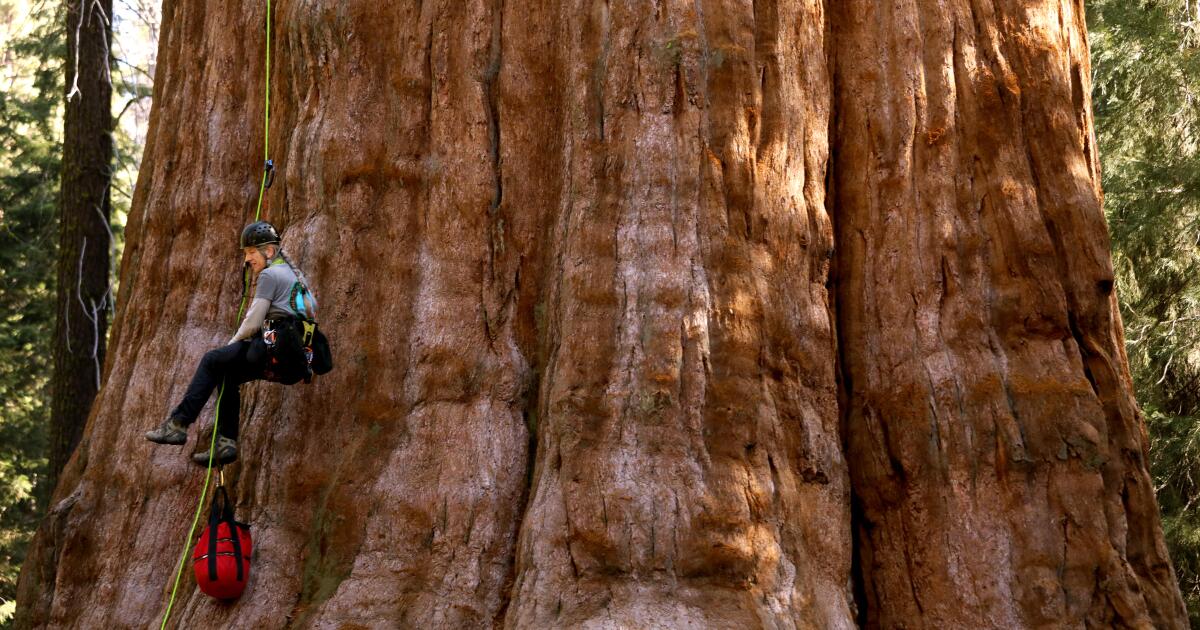Roughly around the time of the Han Dynasty and just prior to the beginning of the Roman Empire, a tree began growing at an elevation of roughly 7,000 feet in what became known as the southern Sierra Nevada. It’s not the tallest or oldest tree in the world today, but it’s the largest when measured by volume, at 52,000 cubic feet. The one-time sapling is believed to be about 2,200 years old and appears to be holding up well for a 275-foot-tall, 2.
7-million-pound old-timer. But a few dozen of its neighbors have taken ill and died in recent years under threat from drought and bark beetle infestations, so on Tuesday the giant sequoia known as the General Sherman tree got a checkup. A team of tree doctors from the Ancient Forest Society rigged ropes and pulleys so they could scale the cinnamon-barked skyscraper and search for signs of trouble.

Anthony Ambrose, the group’s co-founder and director, explained what the trees are up against: “Less snow is arriving, it’s melting earlier, so there’s less water available and [these trees] need an enormous amount of water. A tree like the General Sherman can use maybe 800 to 1,000 gallons of water in a single day,” Ambrose said. “Giant sequoias are typically thought of as being very resistant to pests and pathogens.
...
And now ...
the one-two punch of fire and drought is actually making them vulnerable to beetle attack, when previously they were able to fight them off.” A depressing thought, no doubt, especially given the.
















